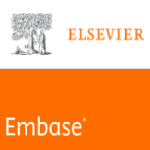Comparing Organizational Socialization Techniques and Organizational Identification in Governmental and Private Knowledge- Based Organizations
DOI:
https://doi.org/10.18311/jeoh/2016/16150Keywords:
Knowledge-Based Organizations, Organizational Identification, Socialization TechniquesAbstract
The present study aimed to examine and compare organizational socialization techniques and organizational identification in governmental and private knowledge-based organizations. With regard to its objective, the present study was an applied research, and regarding its method, it was a comparative one. The statistical population included all employees working in governmental and private knowledge-based organizations of Kurdistan Province. A total number of 280 completed questionnaires were returned to the researcher. In order to collect the required data, the standard questionnaires of Organizational Socialization Techniques with 26 items in 6 components and Organizational Identification with 6 items in 3 components were employed. The validity of the questionnaires was checked through content validity, and their reliability was checked using Cronbach's Alpha which was 0.831 and 0.817 for socialization techniques and organizational identification, respectively. Data analysis was carried out at descriptive and analytical levels using appropriate software. The results indicated that there was no significant between governmental and private knowledge-based organizations in terms of organizational socialization techniques and organizational identification. With regard to the relationship between socialization and organizational identification, a significant relationship between the variables was seen, such that proven method in governmental knowledge-based organizations and authentication method in private knowledge-based organizations had the highest impact on the employees' identification. In the end, some recommendations are presented for the managers of the organizations to employ newcomersDownloads
Metrics
Downloads
Published
How to Cite
Issue
Section
References
Akbarzadeh, N., and Shafiezadeh, E., (2013), "The Role of Government in Improving the Creation and Development of Knowledge-Based”, Growth Technology, 9, 46-55 (in Persian).
Albert, S. Ashforth, B. E. and Dutton, J. E. (2000) "Organizational Identity and Identification, Charting New Waters and Building New Bridges”. Academy of Management Review, 25, Pp. 13-17.
Allahyari, N and Abbasi, R., (2012), "Evaluation of Appropriate Organizational Structure, Knowledge-
Based Companies”, Growth Technology, 8, 47-54 (in Persian).
Allen, D. G. (2006). "Do Organizational Socialization Tactics Influence Newcomer Embeddedness and Turnover?”,Journal of Management. 32, 237- 256.
Azimei, N.A, and Barkhordarei, S., (2010), "Identify the Foundations of the Knowledge Economy Foundation”,Tehran: Science Policy Research Center, (in Persian).
Baker, W. K. (1995). "A Reanalysis and Reinterpretation using Structural Equation Modeling”. Human Relations, 48,169-186.
Benzinger. Diana, (2016),”Organizational Socialization Tactics and Newcomer Information Seeking in the Contingent Workforce”, Personnel Review, 45, 1-43.
Bigliardi, B. Petroni, A. and Dormio, A. I. (2005). "Organizational Socialization, Career Aspirations and Turnover Intentions among Design Engineers”.Journal of Leadership and Organization Development.26, 424-441.
DeConinckJ ,Stilwell D.(2004),”Incorporating Organizational Justice, Role States, Pay Satisfaction and Supervisor Satisfaction in a Model of Turnover Intentions”.Theory and Research; 57, 225-231.
Dina Guglielmi , Chiara Panari , Silvia Simbula Ùˆ Greta Mazzetti, (2014), "Is it Possible to Motivate Teachers? The Role of Organizational Identification”, Procedia - Social and Behavioral Sciences, 116,1842 – 1847.
Edwards J, Cable D. (2009), " The Value of Value Congruence”. JA ppl Psychol. 94, 654-77.
Edwards, Martin R. Peccei, Riccardo (2010). "Perceived Organizational Support, Organizational Identification, and Employee Outcomes: Testing a Simultaneous Multifocal Model”. Journal of Personnel Psychology, 9,17-26.
Ge, Jianhua. Su, Xuemei and Zhou, Yan. (2010); "Organizational Socialization, Organizational Identification and Organizational Citizenship Behavior: An Empirical Research of Chinese High-Tech Manufacturing Enterprises”, Nankai Business Review,International, 1, 166-179.
Gruman, J. A. Saks, A. M. and Zweig, D. I. (2006). "Organizational Socialization Tactics and Newcomer Proactive Behaviors: An Integrative Study”. Journal of Vocational Behavior. 69, 90-104.
Hee. H, and Baruch, Y. (2009) "Transforming Organizational Identity Under Institutional Change”. Journal of Organizational Change Management, 22, 575599.
Hongwei D. and Brown Andrew (2013). "Organizational Identity and Organizational Identification: A Review of the Literature and Suggestions for Future”, Research Group and Organization Management, 38, 3-35.
Jones, G. R. (1986). "Socialization Tactics, Self-Efficacy and Newcomers Adjustments to Organizatios”.Academy of Management Journal, 29, 262-279.
Kato, N. (2010), "Psychological Acculturation, Organizational Socialization and Organizational Commitment: The Case of Japanese Brazilian Working in Japan”, PhD Dissertation, California State University.
Lee. Hung-Wen, (2013),”Locus of Control, Socialization, and Organizational Identification”, Management Decision, 51, 1047 - 1055.
Masood Yasemi, Mohammad Reza HafeziAhmadi, HadiPeyman, Mohammad RasoolYasemi, JavaherKhajavikhan, Karim Hemati. A 7-Years Retrospective Study of Gastrointestinal Cancers Incidence in the Western Iran. Journal of Clinical and Diagnostic Research. 2015 Jul, Vol-9(7): EC01-EC05. DOI: 10.7860/JCDR/2015/12003.6144.
Michailova, S. and Wilson, H.I.M. (2008). "Small Firm Internalization Through Experiential Learning: The Moderating Role of Socialization Tactics”. Journal of World Business. 43, 243-254.
MiladAzami, Mohammad HosseinYektaKooshali, RamakQavam, Mohammad Reza HafeziAhmadi, SamiramisQavam. Heart Valves Prolapse in Population
Referred to Heart Clinic in Ilam, West of Iran, Crescent Journal of Medical and Biological Sciences, Vol. 4, No. 3, July 2017.
Miller, A. E. (2006). "Assessing His Relationship between Organizational Socialization Socialization Tactics and Culture in High Technology Organizations”. The University of Alabama in Huntsville.
MojganJavedani, HosseinAerab-Sheibani, YasamanMadadi, (2015). Ladanyoonesi relationship between C-reactive protein and carotid artery intima media thickness in polycystic ovarian syndrome patients, ActaMedicaMediterranea, 2015, 31: 1393.
Murray M. A. (1975), "Comparing Public and Private Management: An Exploratory Essay”. Public Administration Review. 35, 364-371.
Olkkonen M, Lipponen J. (2006),” Relationships between Organizational Justice, Identification with Organization and Work Unit, and Group-Related Outcomes”. Org Beh Human Decision Proc. 100, 202-215.
Perrot, S., Bauer, T.N., Abonneau, D., Campoy, E., Erdogan, B., and Liden, R.C. (2014), "Organizational Socialization Tactics and Newcomer Adjustment: The Moderating Role Ofperceived Organizational Support”, Group and Organization Management, 39, 247-273.
Puusa A, Tulvanen U. (2006),”Organizational Identity and Trust”. Electronic Journal of Business Ethics and Organization Studies. 11, 24-111.
Rahmanseresht, H., and Symarasl , N., (2009), " Approach Models of Knowledge Management and Knowledge Gaps in the Age of Technology”, Growth Technology, 5(20), 41-48 (in Persian).
RaziehDehghaniFirouzabadi, Leila Sekhavat, Maryam Javedani, (2010). The effect of ovarian cyst aspiration on IVF treatment with GnRH, Arch GynecolObstet (2010) 281:545–549. DOI 10.1007/s00404-009-1195-9.
Reissner, S.C. (2010) "Change Meaning and Identity at the Workplace”. Journal of Organizational Change Management, 23, 287-299.
Riketta M. (2005), "Organizational Identification: A Met Analysis”. J VocatBehav, 66, 38-58.
Robbins, S. P. (2005). "Organizational behavior” .(Translator, Ali Parsaeian and MohamadEarabi). 10th Edition. Bureau of Cultural Research. (in Persian).
Rubenstein-Montano, B., Buchwalter J., Liebowitz J. (2001), "Knowledge Management: A U.S. Social Security Administration Case study”. Government Information Quarterly18, 223-253.
Saks, A. M. Uggerslev, K. L.andFassina, N. E. (2007). "Socialization Tactics and Newcomer Adjustment: A Meta-Analytic Review and Test of a Model”. Journal of Vocational Behavior. 70, 413-446.
Simosi, Maria. (2010). "The Role of Social Socialization Tactics in the Relationship between Socialization Content and Newcomers' Affective Commitment”. Journal of Managerial Psychology. 2, 301-327.
Tangirala S, Green, SG, Ramanujam R. (200),”In the Shadow of the Boss's Boss: Effects of Supervisors' Upward Exchange Relationships on Employees”. J Appl Psychol. 92, 309-320.
Thakor M, Joshi A. (2005), "Motivating Salesperson Customer Orientation: Insights from the Job Characteristics Model”, J Bus Res. 58, 5-37.
Van Maanen, J. and Schein, E. (1979). "Toward A Theory of Organizational Socialization”. In L.L.Cummings, & B. Staw (Eds). Research in Organizational Behavior1,. 209-264.
Wei H, M.T BJ., (2007), "Identity Studies: Multiple Perspectives and Implications for Corporate-Level Marketing”. European Journal of Marketing41, 8-19.
Whetten DA, Mackey A., (2002), "A Social Actor Conception of Organizational Identity and its Implications for the Study of Organizational Reputation”. Business and Society. 41, 393-414.
Wieseke J, Ahearne, M., Lam, SK, van Dick R., (2009), "The Role of Leaders in Internal Marketing”, Journal of Marketing, 73, 123-45.
Yao L.J., Kam. T.H.Y., Chan. S.H., (2007), "Knowledge Sharing in Asian Public Administration Sector: the Case of Hong Kong”. Journal of Enterprise Information Management,20, 51-69.
 Jamile Ahmadian
Jamile Ahmadian







